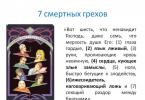mail@site
website
Apr 2003 - Aug 2017
We present a revised version of our material on the interchangeability of different types of ATF. It takes into account the changes that have occurred in recent years in the world of transmissions and oils, changes in logistics and welfare... Let's start with a direct answer to the question in the title, and then we'll go through the main Toyota transmission fluids. Specification of working fluid for domestic market models since the 1980s (automatic machines of the A13#, A24#, A54#, A4#, A34#, A44# series, etc.). In foreign markets, these models were required to be filled with Dexron II/III type ATF without mentioning D-II. There is no technical sense in purchasing this particular liquid. Any ATF that meets Dexron II/III specifications should be used. This Toyota fluid is not included in the repair or operating manuals, since it appeared much later than the end of production of models with classic automatic transmissions. Available in all markets as an original replacement for the outdated ATF D-II. There is no technical sense in purchasing this particular fluid, but in specific conditions, D-III may be more accessible and cost-effective than branded ATF. Used from 1988 to 2002 in “all-wheel drive” automatic transmissions A241H and A540H for better operation of the partial locking clutch of the center differential. The original is still supplied to the domestic market. On the foreign market, Type T-IV is semi-officially considered a replacement for Type T, but the T-IV canister clearly states that “it is not recommended for use in machines running Dexron 2/3 or Type T.” Many years of local practice have shown that cars with these automatic transmissions work perfectly on conventional Dexron-type ATF without any deterioration in the functioning of all-wheel drive. The market supply for Type T is small, and there is no point in a targeted acquisition. Using Type T-IV as a substitute can damage fairly old boxes, so it is optimal to use less aggressive fluids according to the Dexron II or III specification. ATF Type T-II ATF Type T-III Basic specification for all Aisin boxes after 1997 (U44#, U34#, U24#, U14#, early U15#, A65#, late A24#E, A34#). At the very beginning of the 2000s, instead of the then rare and expensive T-IV, traditional ATFs such as Dexron III were successfully used. Later, independent oil manufacturers began producing ATF specification 3309 and universal ATF, and subsequently the supply of the original T-IV grew so much that it became perhaps the most affordable fluid of its specification - it is often purchased by owners of other car brands with similar Aisin gearboxes (Audi, Chevrolet, Daewoo, Fiat, Ford, Mazda, Opel, Porsche, PSA, Renault, Saab, Suzuki, VW, Volvo etc). Using Dexron specification instead of T-IV ATF does not entail negative consequences, but today it is no longer practical. The main specification in force since 2004, used in modern 5/6/8-speed automatic transmissions (U15#, U66#, U76#, A75#, A76#, A96#, AA8#, AB6# series). It has a significantly lower viscosity compared to the previous ATF T-IV. The liquid is available in sufficient quantity on the market. It is equally valid to use either the original WS or any ATF that meets the JWS 3324 specification - depending on the specific circumstances. Along with the first Toyota CVTs in 2000, a specialized working fluid for CVTs appeared. It is optimal to use the original CVTF TC, which is available in sufficient quantities on the market. Any fluid that meets the JWS 3320 specification can be used. In urgent cases, universal CVTFs can be used. Since 2012, a gradual transition of all CVTs to the new “energy-saving” FE fluid began - with a noticeably lower viscosity and fewer useful additives. It is optimal to use the original CVTF FE, which is available in sufficient quantities on the market. If urgently needed, universal CVTFs can be used. "Why write about it? Today everyone can afford the original"
"Oil or ATF - scholasticism?"
"Why are GM and Dexron taken as reference points?"
A little history of specifications from GM:
Used in 1990-1997. for some electronically controlled automatic transmissions (A34# series on classic sedans). Officially replaced by T-IV.
In practice, it was successfully replaced by any traditional ATF. Today, using Type T-IV as a substitute can damage fairly old boxes, so it is best to use less aggressive fluids according to the Dexron II or III specification.
Used in 1994-1998. on some machines with Flex-LockUp (part A34#, A35#, A541E, A245E). Officially replaced by T-IV.
An equally correct solution is to use both the original Type T-IV fluid and any ATF that meets the JWS 3309 specification - depending on the specific circumstances.
Let there be no problems now with either the availability or the price of original working fluids. But the question is different - completely reasonable advice "We must use recommended liquids" too often replaced by a slogan "You can't use anything other than the original!" It is impossible to put up with this crude manipulation, once introduced by cunning Japanese spare parts dealers, picked up by officials and spread by a mass of owners who are far from technology.
In manual transmissions, the transmission oil serves almost exclusively as a lubricant. The main task in an automatic transmission is liquids- transfer of power from the engine to the gearbox, then work in the hydraulic control system, providing the necessary friction in the clutches, cooling the rubbing elements and the lubrication itself. Therefore, the broader concept of ATF (Automatic Transmission Fluid) has been established - fluid for automatic transmissions.
Today, the GM-Ford joint venture for the production of automatic transmissions is on the sidelines and deep in the shadow of the world's transmission giants - Aisin, ZF, HPT, Jatco... However, it was GM who were the founders of the mass use of automatic transmissions, the world's largest OEM suppliers of automatic transmissions, and their fluid specification has become synonymous with the concept of ATF for many years.1949
ATF Type A - GM's first ATF specification
1957
ATF Type A suffix A - specification update
1967
Dexron B - the first specification with the actual Dexron designation
1972
Dexron IIC - variant with new friction modifiers
1975
Dexron IID is a revised version of IIC, which has become the most common standard and synonymous with ATF for many years.
1991
Dexron IIE - improved specification with better viscosity-temperature properties
1993
Dexron IIIF - unified replacement for IID and IIE
1997
Dexron IIIG - new requirements for frictional and anti-oxidation properties with IIE viscosity characteristics
2003
Dexron IIIH - improved base with better durability, protection against oxidation and foaming
2005
Dexron VI - a new, noticeably less viscous liquid
- The specifications “Dexron IV” and “Dexron V” did not officially exist, although in slang this could be called IIIG and IIIH. The marketing designation “D-IV” for late dexrons was sometimes used by independent oil manufacturers on the market.
- Shortly after the release of D-VI, GM canceled all previous specifications and declared full backward compatibility of the new ATF with all early Dexron types. In reality, transferring older boxes to a liquid of a different composition and with noticeably different viscosity characteristics looks extremely doubtful.
- The original GM Dexron VI became famous for its tendency to darken very quickly (to the point of motor exhaustion), although the manufacturer officially considers this behavior to be the norm.
"Universal fluids?"
Here is a clear example of how the manufacturer of Toyota transmissions - Aisin - relates to the idea of narrow specialization of fluids: AFW+ - an alternative everyone ATF from D-II to WS (as well as a lot of original ATFs from other brands), CFEx is an alternative to all CVTFs, including TC and FE.
 |
Today this is becoming a trend: one fluid for all automatic transmissions, another fluid for all CVTs, absolute backward compatibility with earlier ATFs.
Of course, we strongly welcome such official confirmation of our words more than ten years ago about the interchangeability of ATF. But let’s try not to forget one more important principle - “don’t stop the car from working” - for properly functioning gearboxes 10-15-25 years old, it is best to continue using the fluid they have been running on so far.
"Periodicity?"
It would be appropriate to remind not only “what”, but also “when” to pour into the automatic transmission. However, since the beginning of the mass operation of automatic machines, the answer has not changed: every 30-40 t.km it is worth making at least a partial replacement (renewal) of the fluid, every 80-120 t.km - a replacement with removal and cleaning of the pan, magnets, and the obligatory replacement of the filter. It’s even better not to just “renew” the fluid, but to change it using the displacement method (with a stand cooler connected through the hoses, through which fresh fluid is supplied while the engine is running and the old one is drained - this is how both the transmission lines and the torque converter housing are washed).
In the 2000s, many new automatic machines lost control probes, and the frequency of mandatory ATF replacement disappeared from the instructions (but the concept of “working fluid designed for its entire service life” arose). It is officially proposed to check the condition of the fluid every 40 thousand kilometers, and change it after 80 thousand kilometers only under particularly difficult operating conditions. Literally following such recommendations will condemn an automatic transmission, especially a modern one, already in the second hundred thousand kilometers, so for long and trouble-free operation it is better to adhere to the traditional frequency of ATF replacement even on the newest cars.
“What did the manufacturer recommend to put in my box (A541E, A340H, A245E)?”
The exact recommendations of the manufacturer can be given by knowing not only the model of the box, but also the model and year of manufacture of a particular car. Firstly, the same Toyota designations were worn by several machines of slightly different designs. Secondly, the recommendations changed periodically even during the release of one generation of the model (this happened especially often during the period of the appearance of the next, new specifications at that time - T-IV, WS, FE).
"What is flex lock-up?"
Since the mid-1990s, Aisin automatic transmissions have had a "partially locked" torque converter operating mode (FLU - Flex Lock Up). Previously, automatic torque converters operated in two modes - either with the transmission of torque from the engine only through liquid, or in a complete blocking mode, when the crankshaft, transformer housing and input shaft of the box were tightly connected by a friction clutch and the torque was transmitted purely mechanically, like a traditional clutch. In a box with partial locking, there is an intermediate mode in which the clutch can slip to varying degrees when transmitting force. At first, partial blocking was used for light loads and in a rather narrow speed range, but in order to increase efficiency and improve dynamics, full and partial blocking modes on more modern machines began to be used more and more often.
Of course, FLU is not a Japanese know-how, so since the development of the Dexron III specification, the requirements for machines with partial interlocking have been taken into account.
"They say if you put Dexron instead of T-IV, you'll get tremors?"
When filling any fresh fluid, even the original one, some changes in the behavior of the machine are possible, and not always positive. Fresh ATF always differs from the old one in its chemical/physical properties (even more so than the differences between two different types of fresh fluid), and in its own way affects the operation of the box, which has already “adapted” to the old ATF.
In our practice, no differences in the behavior of serviceable machines were noted when using other ATFs instead of T-IV (even without approval 3309).
“Where can I find out the viscosity of the original fluid?”
Safety data sheets for all original materials, from paints and oils to antifreeze and fragrances, have been on the main Toyota website for a long time and are regularly updated.
"What is the code for the most correct original Type T-IV?"
The original Toyota ATF can take a very different external form: a metal “Japanese” can (black, white, gray), a black plastic “US” bottle, a gray plastic “European” canister... you shouldn’t try to distinguish the “more real” one from them.
But this is why the retail price of the original ATF in the Russian Federation sometimes turns out to be one and a half to two times lower than in Japan or the USA... it’s better if it remains a small trade secret.
"Type T can be officially replaced by Type T-IV"
On the one hand, in June "98 Toyota released service bulletin TC003-98 for the American market, according to which the then new ATF Type T-IV completely replaced the previous T-II and T-III, but did not replace the Type T itself.
On the other hand, the technical documentation for the domestic market never provided for replacements for Type T, and the original metal canisters with Type T-IV are still indicated in Japanese and English "not recommended to use... instead of Type T".
 |
Which option is more correct? The first and last of the models with a Type T transmission widespread on the foreign market was the RAV4 SXA10 (for which these bulletins appeared), but in Japan in 1988-2002 almost two dozen models were produced, and much more popular ones, with A241H and A540H gearboxes. Therefore, in matters of operating all-wheel drive, domestic market practices deserve more trust. And today we can add - if the Japanese Toyota officially recognized the replacement of Type T, then it would not have sold this liquid in the late 2010s, but would have immediately sent it into oblivion as T-II, T-III and dozens of other oils of truly outdated specifications.
“Has anyone actually filled in non-original fluid?”
I would like to remind you that Japanese cars appeared in the country back in the days when there were no mobile phones, the Internet, and in Primorye we drove on winter roads... And, of course, there was not even the very concept of “original fluids,” the commercial import of which only began at the turn of the 2000s. But from the very beginning of the 1990s, tens of thousands of Toyotas (including those with A241H, A540H, A245E, A340E gearboxes) were operated here using any available ATF - without breakdowns or problems, and many of them are still doing well today.
But before purchasing a completely non-brand ATF, we strongly recommend that you read the final part of our articles about choosing engine oil.
“Everything is clear... but maybe the original is still better?”
Of course, in addition to the benefits for the car, the use of original working fluids has a calming effect on the owner and increases his heart rate. And do not forget that in addition to the original ATF, the instructions require the use of:
Only Toyota approved motor oil
only original coolant "Toyota Super Long Life Coolant" genuine
only original power steering fluid "Toyota Power Steering Fluid"
only original brake fluid "Toyota Brake Fluid 2500H"
only original compressor oil "ND-Oil8-11"...
As well as only original Toyota spare parts.
Purchased only from official Toyota dealers.
Otherwise, the car will immediately fall apart, right?
Unlike motor oils, special fluids for automatic transmissions, in my opinion, should be taken from native, original ones. The fact is that an automatic transmission is a very delicate mechanism, and the use of unsuitable fluids can lead to its premature failure. And if on older cars everything was quite simple, they used Dexron II or Dextron III, which is produced by a large number of manufacturers, but now automatic transmissions from various companies use a variety of fluids recommended specifically for their type of gearbox. Therefore, when the question arose about changing the oil in an automatic transmission on a Toyota, the choice without hesitation was made in favor of a branded canister of the recommended fluid TOYOTA ATF TYPE T-IV.
The can itself was similar to a can of Toyota motor oil, which I also switched to after a short selection. The canister is gray, with black and red print. All information is in Japanese, in hieroglyphs. Only the most basic ones are given in English.

On the side wall, the information is also given in Japanese and duplicated in English. There is a warning about safety precautions (do not change the fluid on a hot transmission, wear safety glasses and gloves), first aid instructions for contact with eyes, skin or inside the body, recommendations for storing and disposing of used fluid.

In total, we have high-quality oil from the manufacturer for automatic transmissions of Toyota cars, for which ATF TYPE T-IV is recommended, at a price slightly higher than you can find analogues from third-party manufacturers. But changing the fluid in an automatic transmission is not required so often (usually every 50 tkm, but we can do it more often), so I consider the costs of a truly high-quality product justified. Especially when it comes to such an expensive unit as an automatic transmission.



